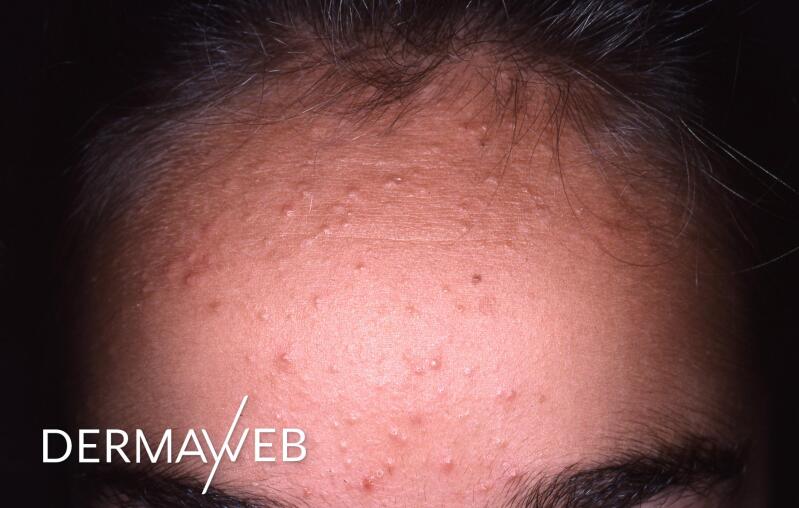-
Your concerns
Our articles to help you gain a better understanding
-
Our solutions
-
Ducray Dermatological laboratories
Our articles to help you gain a better understanding

As its name suggests, retentional acne is characterized by the presence of retentional lesions, namely blackheads and whiteheads, also known as microcysts. Lesions are small but sometimes unpleasant, as they give the skin an unattractive appearance. Retentional acne is often associated with oily skin and dilated pores. It mainly affects teenagers, but retentional acne in adults also occurs and often poses problems, as people may incorrectly think that it is due to a lack of hygiene and care.
The areas most affected by retentional acne are the T-zone of the face (forehead, nose and cheeks, chin), the back, the upper chest, and all areas that contain high amounts of pilosebaceous follicles, including skin pores, which combine a hair and a sebum-producing sebaceous gland. The different acne types develop in the pilosebaceous follicles.
Several phenomena combine to produce retentional acne and microcysts. On the one hand, hyperseborrhea relates to hyperproduction and accumulation of sebum with the production of androgen hormones. The skin becomes oily and the pores dilate. On the other hand, hyperkeratinization corresponds to an abnormal build-up of keratinocytes. This causes an accumulation of sebum and dead cells in the skin pores, which become clogged, forming the first retentional acne lesions.
Do not touch blackheads and whiteheads, as this may cause superinfections and scarring. Your doctor may prescribe various treatments with keratolytic properties, such as retinoids. They may also suggest skin cleansing or methods such as laser treatment to remove retentional acne lesions. Treatments for retentional acne vary and are customized for each patient.
On a daily basis, you should preferably use cosmetics adapted to retentional acne. Cosmetics that contain lots of keratolytic active ingredients cleanse pores blocked by sebum and dead cells, while cosmetics rich in hydrating and soothing agents offset the drying effects of certain medicinal treatments.
Oily or acne-prone skin

Oily or acne-prone skin
NEWSLETTER
Dermatological expertise
To better understand your skin and hair, discover our exclusive content and innovative care products designed to improve your quality of life..